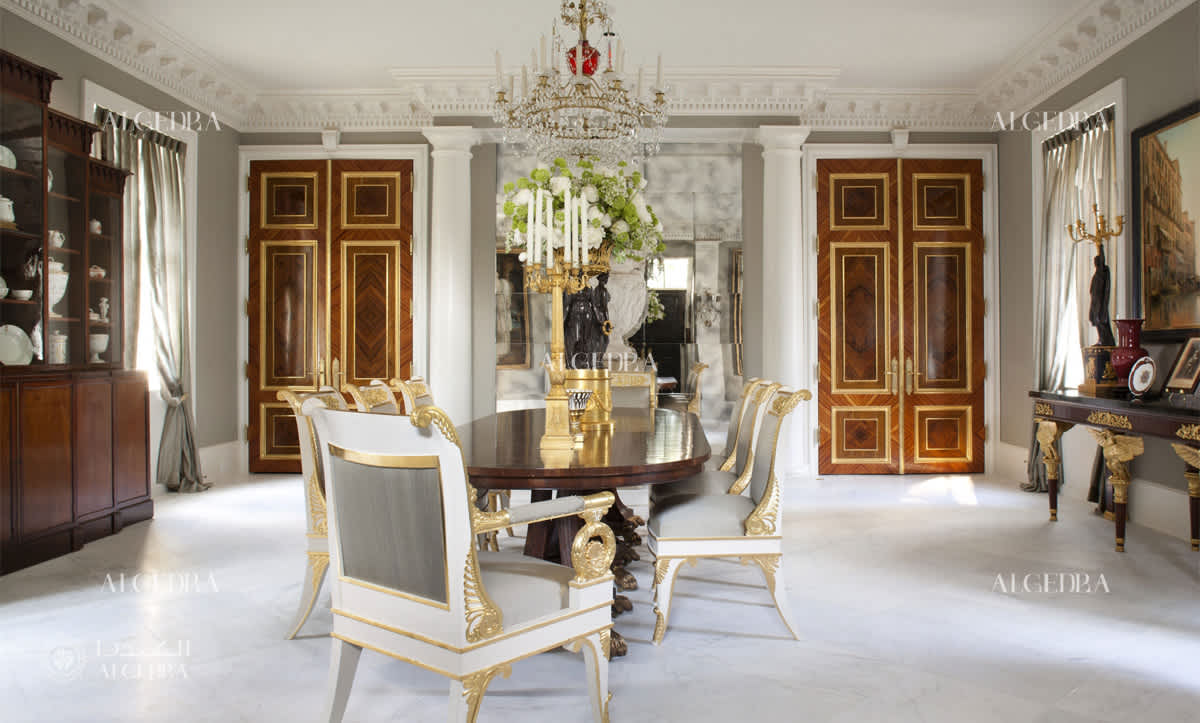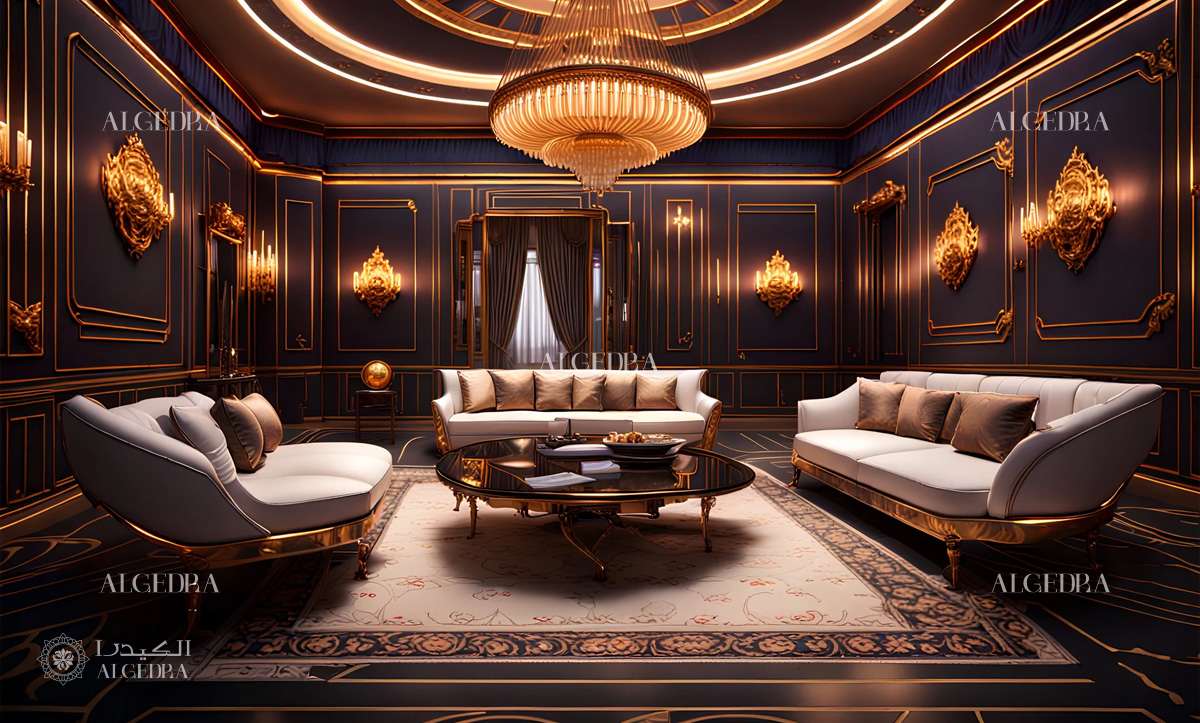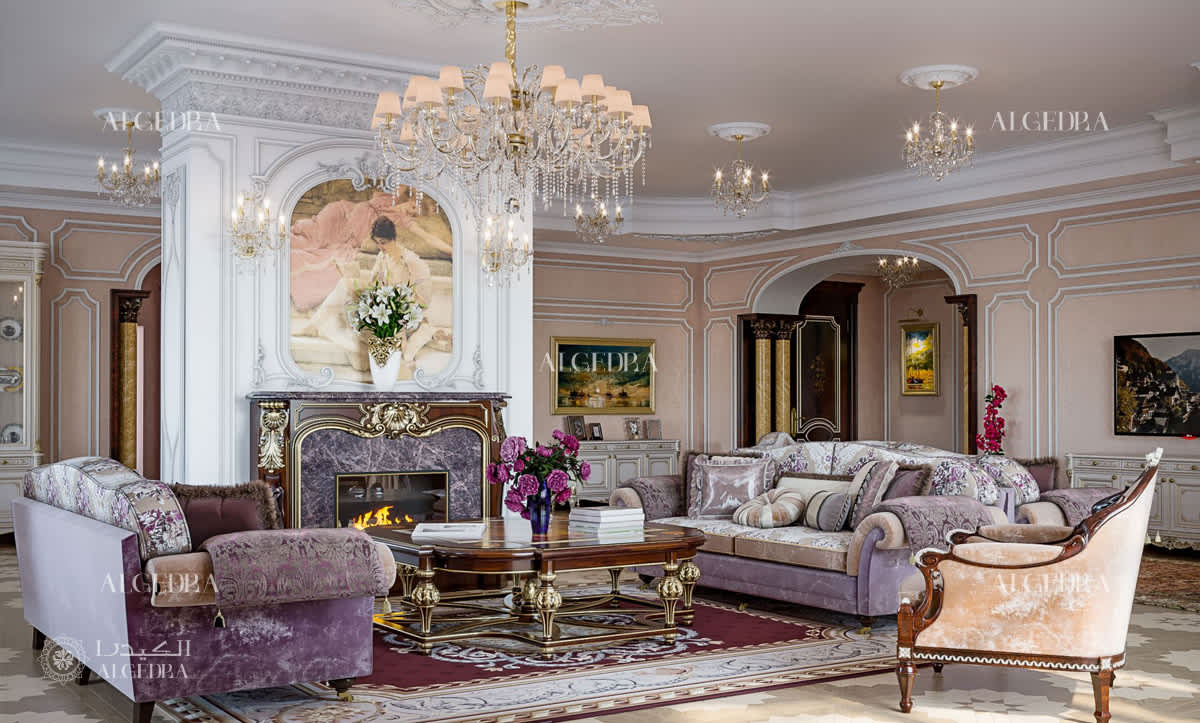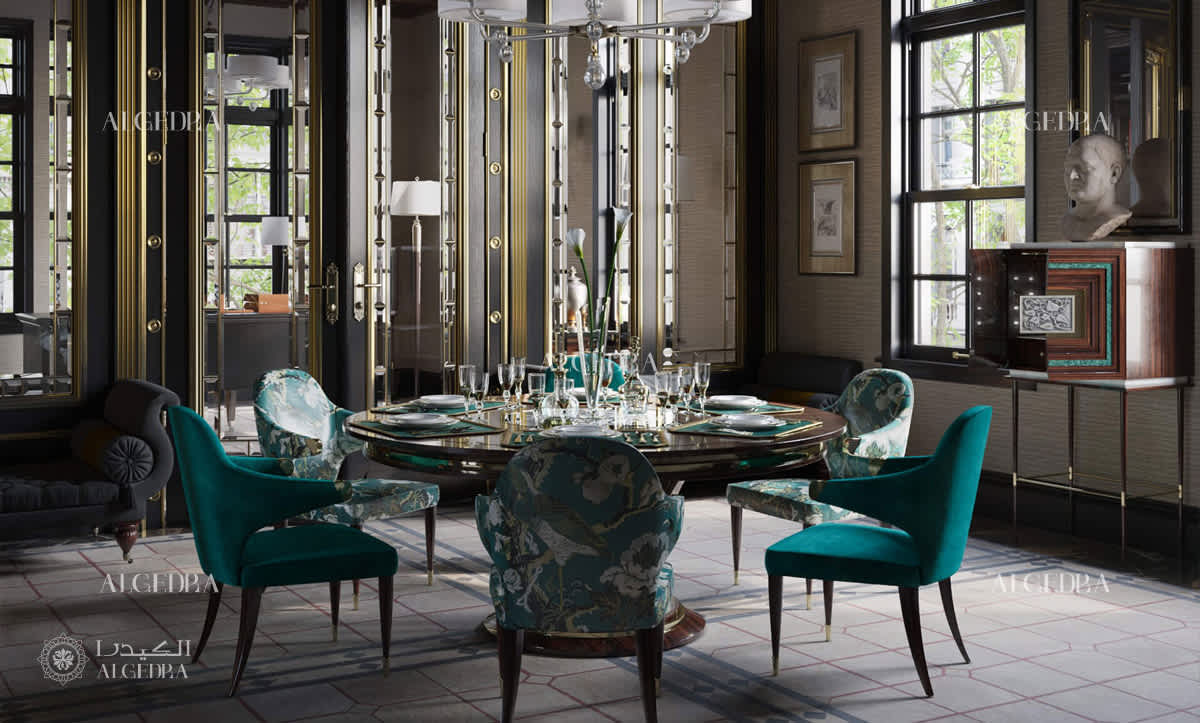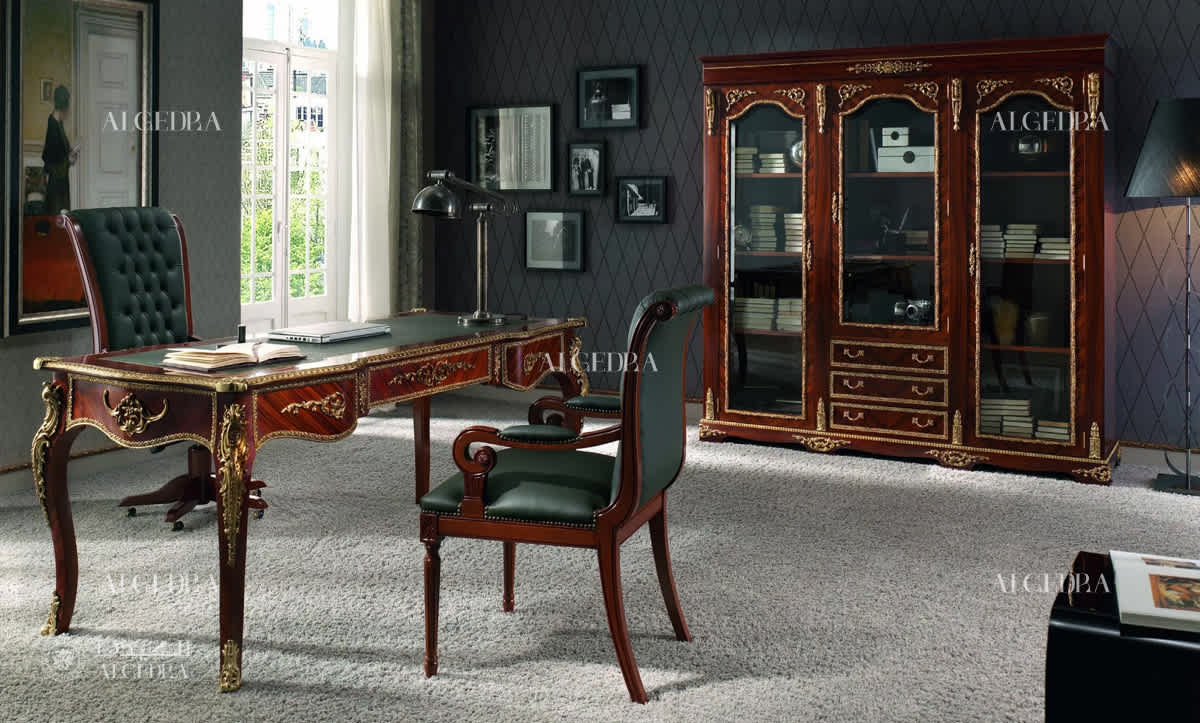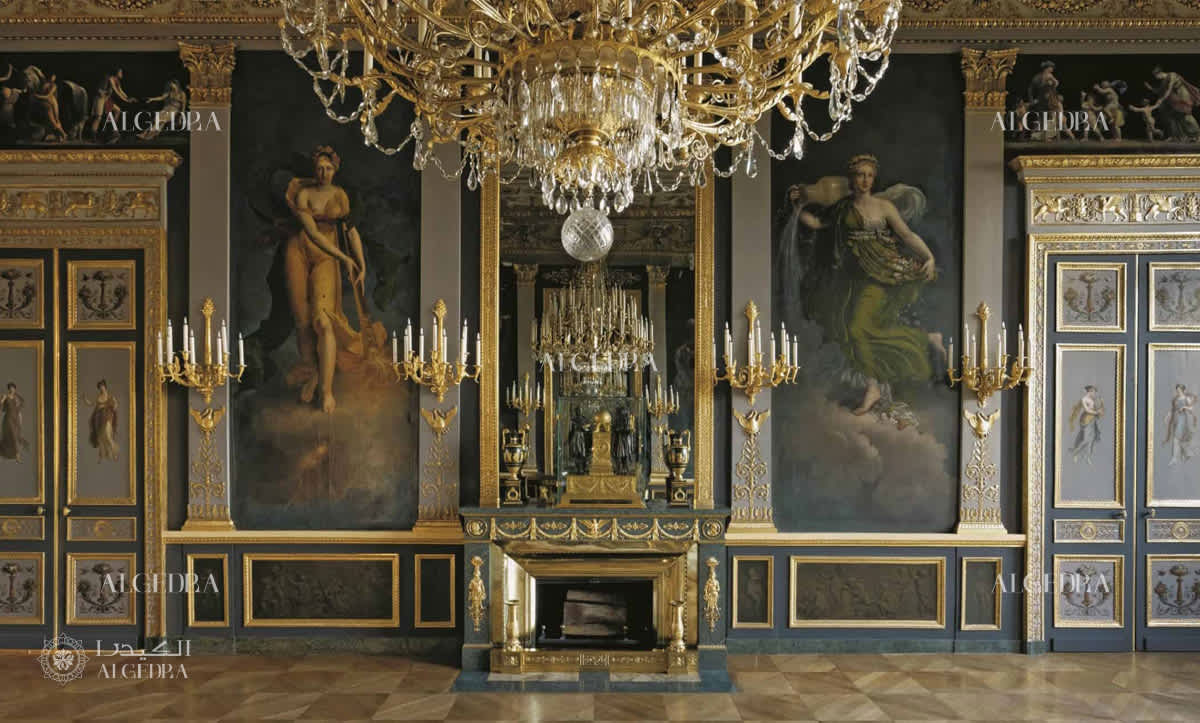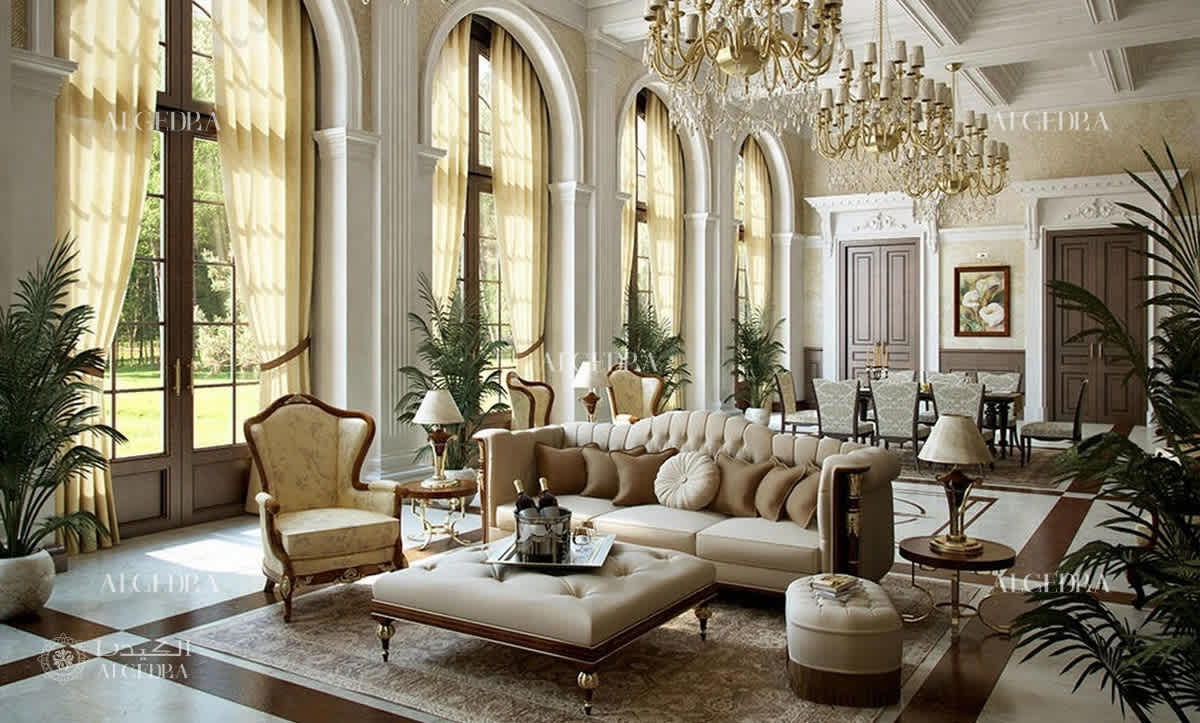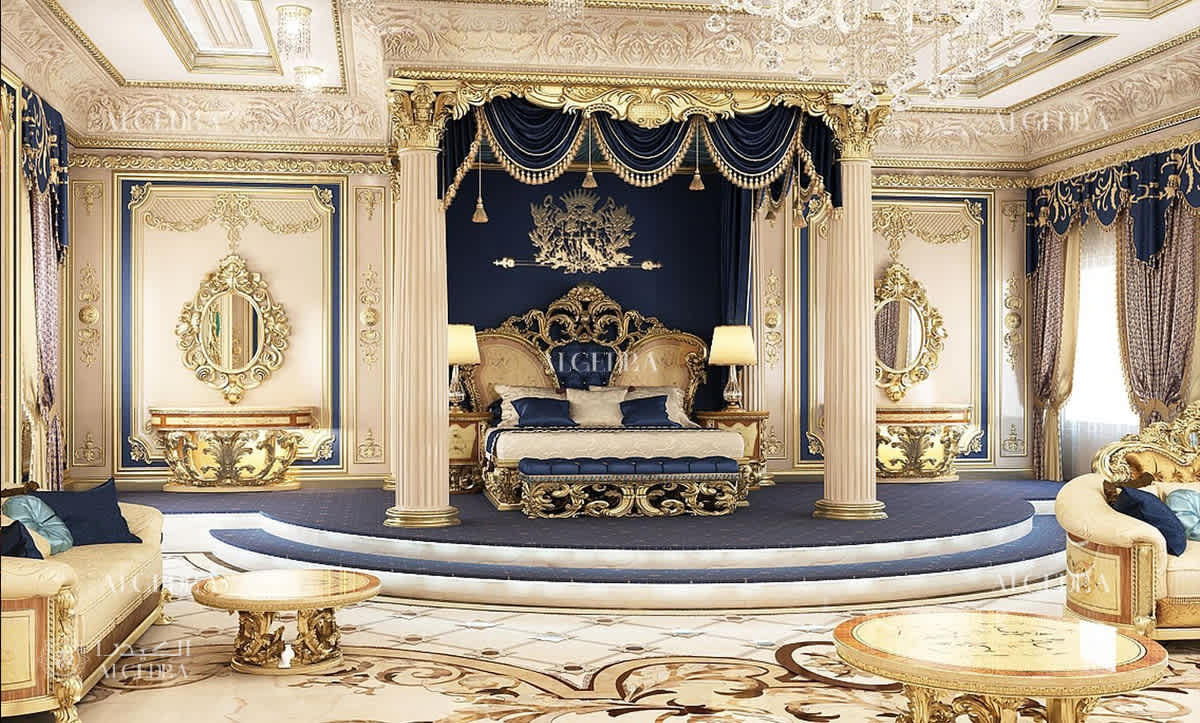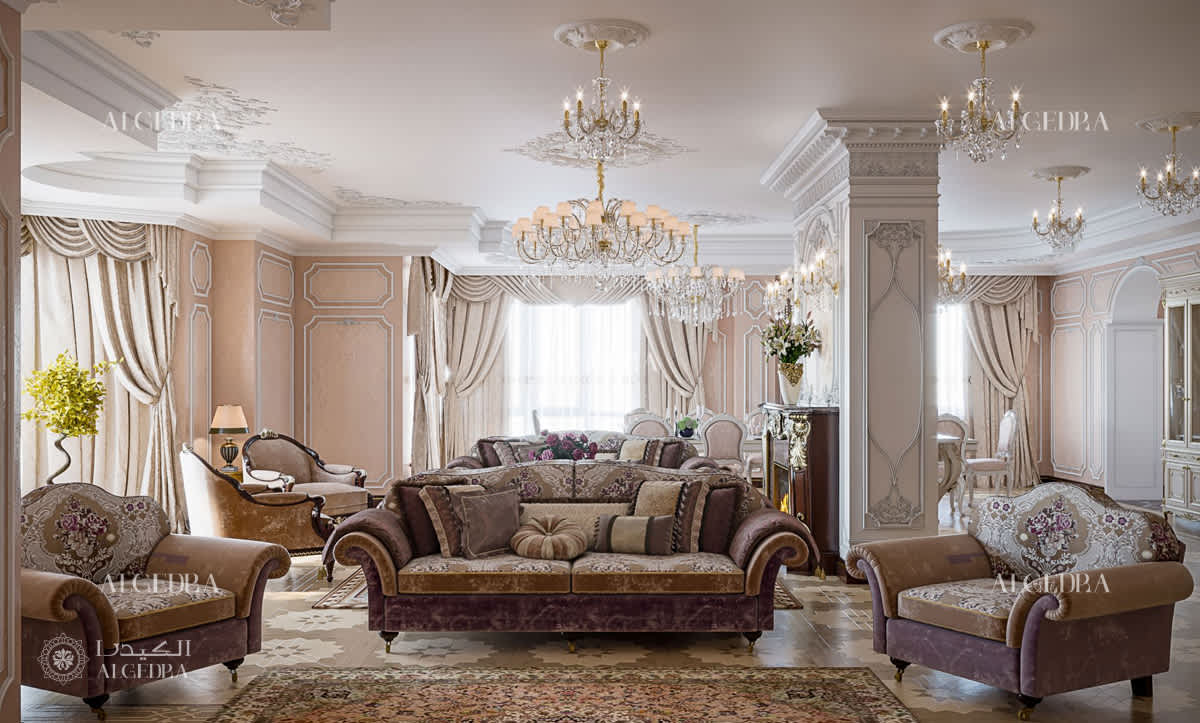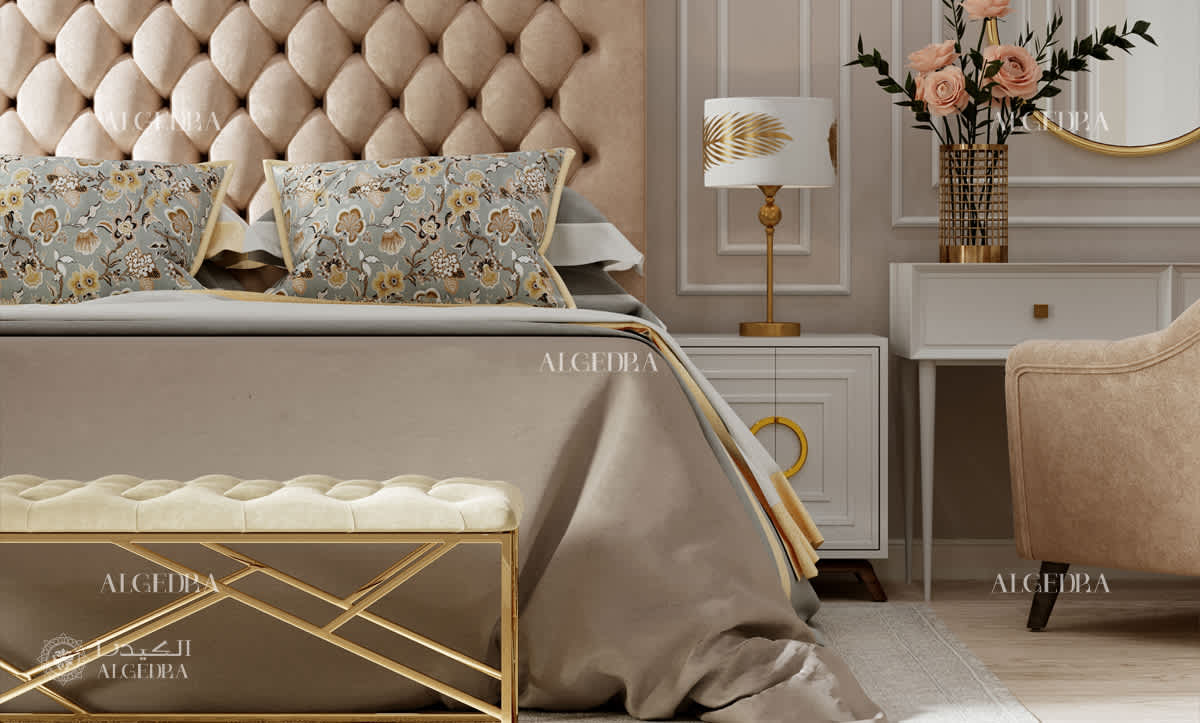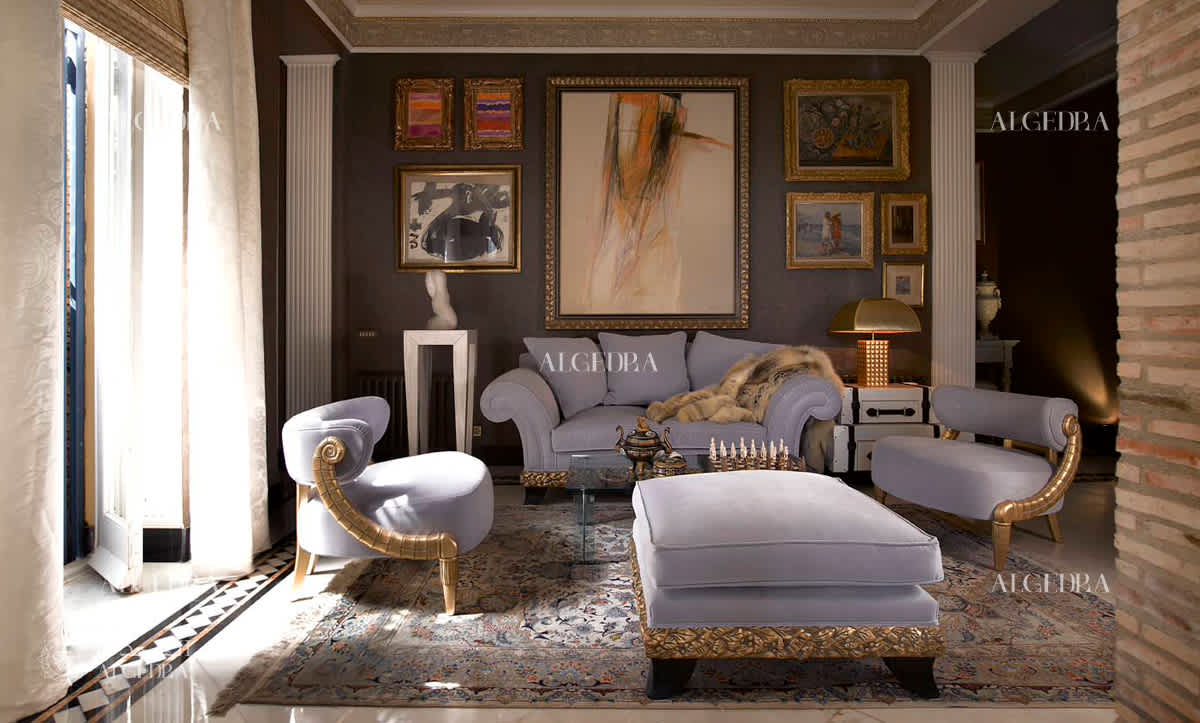The Empire interior design style is a grand and luxurious approach that emerged during the early 19th century. Originating in France, this style flourished under the reign of Napoleon Bonaparte. It reflects the emperor's desire to showcase power and grandeur through architecture and interior design. This design style is recognized for its opulent elements, drawing inspiration from classical antiquity.
The use of bold colors and sumptuous fabrics is an emphasis of Empire interiors. These interiors often feature rich materials such as velvet and silk. Furniture pieces are typically large and imposing, often adorned with gilded accents and elaborate carvings. The overall aesthetic aims to create a sense of majesty and splendor, reminiscent of the grand palaces of the era.
Empire interiors also incorporate classical motifs such as laurel wreaths, eagles, and other symbols of power. These elements are often integrated into furniture, textiles, and decorative objects. The style emphasizes symmetry and order, contributing to its formal and elegant appearance.
Today, the Empire style continues to inspire many interior designers who seek to recreate its timeless elegance.
1- Key Elements of Empire Interior Design
Empire interior design is characterized by several key elements that define its luxurious and formal appearance. One of the most notable features is the use of bold colors. Deep reds, rich greens, and vibrant blues are commonly used in Empire interiors. These colors are often paired with gold accents to enhance the sense of opulence.
Furniture in the Empire style is typically grandeur and imposing. Pieces are often made from dark woods such as mahogany and ebony. These woods are chosen for their rich appearance and durability. Furniture is frequently adorned with gilded accents, intricate carvings, and classical motifs. Chairs, tables, and cabinets often feature legs designed to resemble animal forms or classical columns.
Textiles play a significant role in Empire interiors. Heavy draperies made from luxurious fabrics such as velvet and silk are commonly used. These draperies are often embellished with gold fringe or tassels. Upholstery on furniture is typically done in rich fabrics that complement the overall color scheme of the room. The use of textiles adds to the sense of richness and luxury that defines the Empire style.
2- Use of Classical Motifs
Classical motifs are a defining characteristic of the Empire interior design style. These motifs are inspired by ancient Greek and Roman art and architecture. Common motifs include laurel wreaths, eagles, and mythological creatures. These elements are often used in furniture design, textiles, and decorative objects.
Laurel wreaths are a common motif in Empire design. They symbolize victory and honor and are often used as decorative elements on furniture and textiles. Eagles are another common motif, representing power and strength. These motifs can be found on everything from chair backs to mirror frames.
Mythological creatures such as griffins and sphinxes are also commonly used in Empire design. These creatures are often depicted in carvings and sculptures. They add a sense of grandeur and mystique to the overall design. The use of classical motifs helps to create a sense of timelessness and elegance in Empire interiors.
3- Symmetry and Order
Symmetry and order are essential principles of Empire interior design. The style emphasizes balance and proportion, creating a formal and harmonious appearance. This is achieved through the use of symmetrical arrangements and carefully planned layouts.
In an Empire interior, furniture is often arranged in pairs to create a sense of balance. For example, two matching chairs might flank a fireplace, or a pair of candlesticks might be placed on either side of a mantel. This symmetry extends to other elements of the design, such as window treatments and decorative objects.
Order is also an important principle in Empire design. Rooms are typically organized in a way that emphasizes structure and formality. Furniture is placed with careful consideration to create a cohesive and well-planned space. This attention to organization contributes to the overall elegance and sophistication of the Empire style.
4- Modern Style for Empire Design
While the Empire interior design style originated in the early 19th century, it continues to influence modern interior design. Contemporary designers often incorporate elements of the Empire style into their work to create spaces that are both elegant and timeless.
One way that modern designers incorporate Empire elements is through the use of classical motifs. These motifs can be used in a variety of ways, from furniture design to wall art. Incorporating these elements helps to create a sense of history and grandeur in a modern space.
Another way that Empire design is used in modern interiors is through the use of luxurious materials. Velvet, silk, and gold accents are still popular choices for creating a sense of opulence. These materials can be used in a variety of ways, from upholstery to draperies, to add richness and texture to a space.
Modern interpretations of the Empire style often emphasize a more streamlined and simplified approach. While traditional Empire interiors are known for their ornate and elaborate designs, contemporary versions may feature cleaner lines and less decoration. This modern take on the Empire style maintains its sense of luxury and elegance while appealing to contemporary tastes.
5- The Importance of Professional Design
Creating an Empire interior requires a careful and thoughtful approach. The style's emphasis on luxury and formality means that every element must be chosen with care. This is where the expertise of a professional interior design company becomes invaluable.
A professional interior design company in Turkey can help bring the Empire style to life in your home. These experts have the knowledge and experience to select the right materials, furniture, and decorative elements to create a cohesive and elegant space. They can also help with the planning and organization of the space to ensure that it applies to the principles of symmetry and order that define the Empire style.
In addition to their expertise, a professional interior design company can also provide access to high-quality materials and furnishings that are essential for creating an authentic Empire interior. They can source luxurious fabrics, ornate furniture, and decorative objects that reflect the opulence and grandeur of the Empire style.
Conclusion
The Empire interior design demonstrates the grandeur and elegance of the early 19th century. Its emphasis on bold colors, luxurious materials, and classical motifs creates a sense of timeless elegance that continues to inspire designers today.
Whether you are looking to recreate the opulence of the Empire style in your home or incorporate its elements into a modern space, a professional interior design company in Turkey can help bring your vision to life. With their expertise and access to high-quality materials, they can create a space that reflects the grandeur and sophistication of the Empire style.
Contact us today, or check our interior design gallery to find out more.
